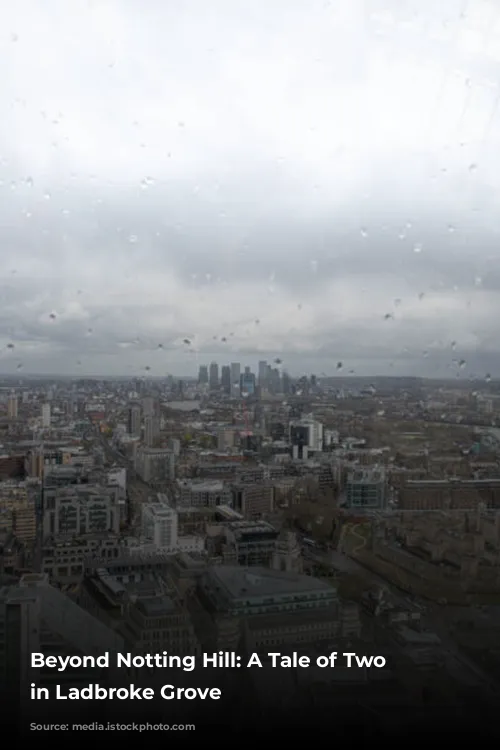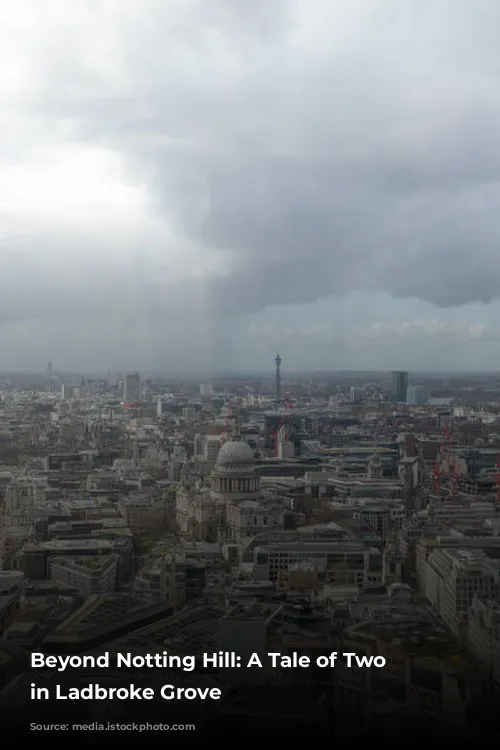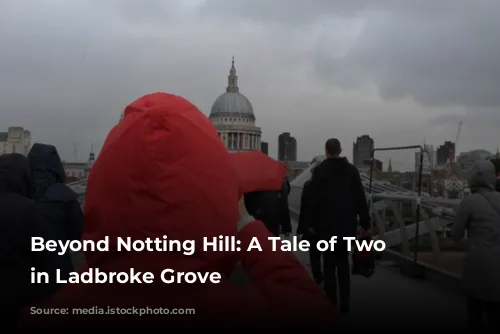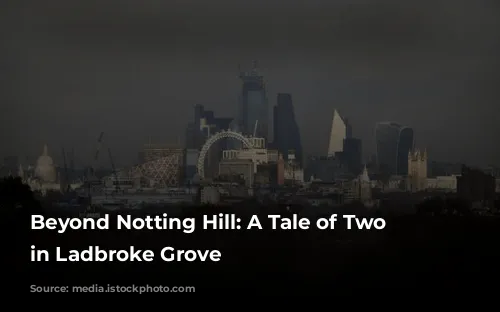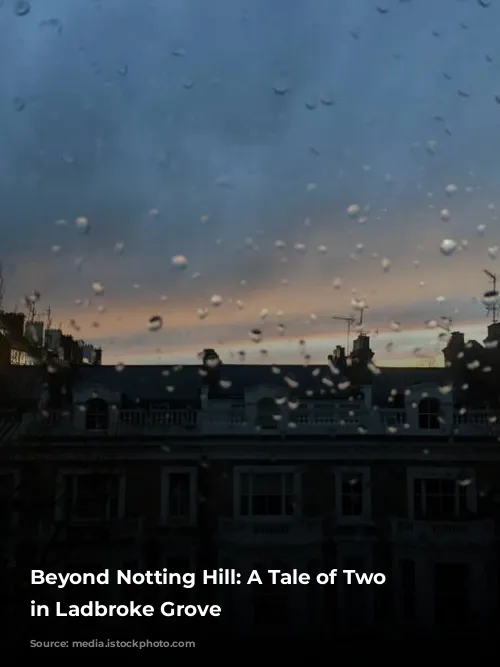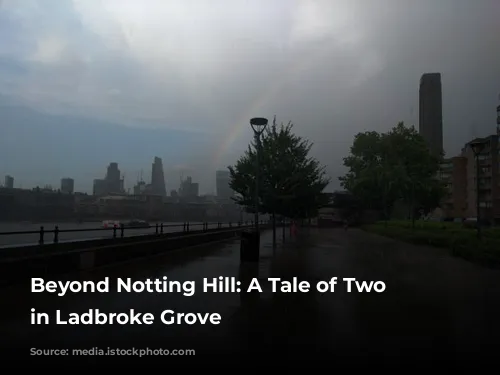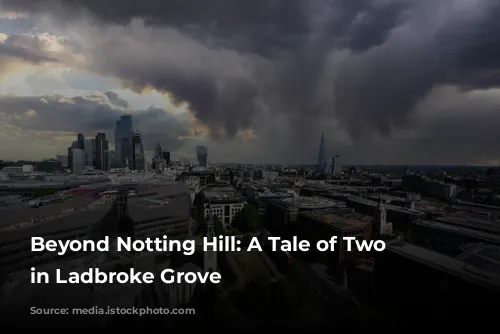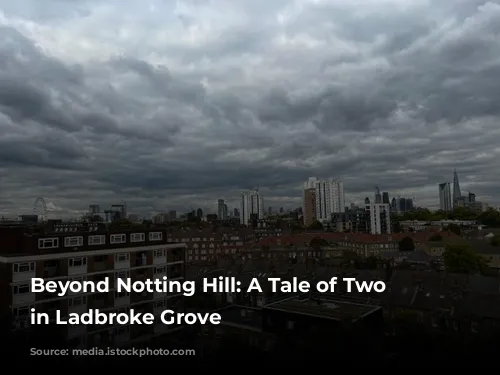The charming streets of Ladbroke Grove, made famous by the movie “Notting Hill,” hold a secret: they are a microcosm of London’s stark socioeconomic contrasts. This neighborhood, situated in the heart of Kensington and Chelsea, is a fascinating blend of opulence and poverty, offering a glimpse into the city’s complex social fabric.

From Farmland to Counterculture
The story of Ladbroke Grove begins in the 19th century when James Weller Ladbroke, a visionary landowner, transformed his farm into a desirable residential area. However, by the 1950s, grand Victorian houses were partitioned into multiple-occupancy dwellings, housing new arrivals from the Caribbean and other parts of the world. During the 1960s, Ladbroke Grove became a vibrant hub of countercultural movement, attracting artists, musicians, and free thinkers. This period saw the iconic punk band The Clash immortalize Ladbroke Grove in their song “London’s Burning,” solidifying its place in the pop culture landscape.
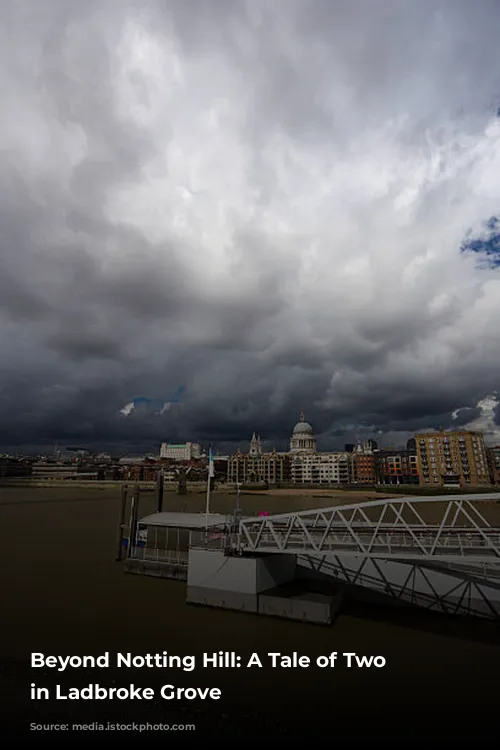
A Blend of Boho and Wealth
The early 21st century saw Ladbroke Grove become a haven for “Notting Hill set”, a community of wealthy Conservative figures, alongside a bohemian scene of fashion designers and influential media personalities. This diverse mix continues to define Ladbroke Grove today.
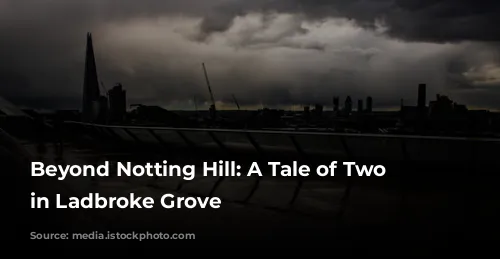
A Tale of Two Cities: Wealth and Poverty Coexist
Ladbroke Grove is a stark example of wealth and poverty existing side-by-side. While some residents enjoy the luxurious lifestyle depicted in “Notting Hill,” others struggle to make ends meet in this expensive city. House prices, particularly in Kensington and Chelsea, are among the highest in the country. Across the borough, the average house price in Ladbroke Grove surpasses £2.7 million, while flats average over £1 million. Luxury homes in sought-after areas can fetch up to £14 million, although typical asking prices hover between £4 million and £5 million.

Social Housing and Inequality
Despite the affluent facade, Ladbroke Grove is home to housing estates that serve as a stark reminder of the economic disparity. In fact, Kensington and Chelsea saw the highest percentage point rise in the proportion of social rented housing in England between 2011 and 2021. This reflects the growing need for affordable housing in an area increasingly dominated by high-income earners.

A Tale of Two Cities: A Reality Check
Jediah Ali, a youth worker who has lived in Ladbroke Grove for 15 years, aptly describes the area as “cheek by jowl.” He highlights the stark contrasts: multi-million-pound homes standing next to housing estates where mental health struggles are prevalent, and football stars rubbing shoulders with gang members.
This disparity is further emphasized by the Office for National Statistics, which found that Kensington and Chelsea has the largest disposable income gap between neighborhoods in the UK. While residents in Hans Town, a luxury shopping district, boast an average disposable income of £63,900, those living in Golborne and Swinbrook, the area where a recent shooting took place, have an average disposable income of just £22,600, almost three times lower.
Ladbroke Grove’s story is a reminder that even in the most glamorous areas of London, a stark reality of inequality exists. The neighborhood serves as a potent symbol of the complex social fabric of London, showcasing the coexistence of both wealth and poverty in one location. While its glamorous image may be familiar, it’s essential to remember that beyond the charming facades, there are many stories of struggle and resilience waiting to be told.
